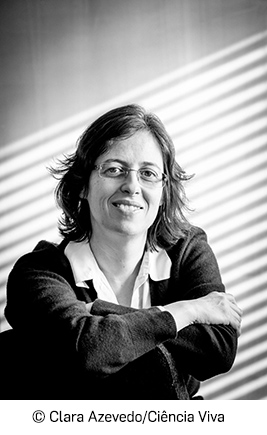How bacteria divide
Oeiras, 14.02.2018
The process that allows bacteria to divide is crucial for their survival and a good target for the development of new antibiotics. Mariana Gomes de Pinho Lab has been working to unveil the molecular details of the coordination between peptidoglycan synthesis and cytokinesis in the bacterial pathogen Staphylococcus aureus, and they have taken it a step further with results published today in Nature.
Peptidoglycan is the major component of the bacterial wall, responsible for protecting cells from mechanical stress. When a bacterial cell divides, it has to synthesize peptidoglycan to form a septum, which will split the mother cell in two identical daughter cells in a process called cytokinesis. The precise molecular mechanism of this process was unclear, with two competing models that have now been clearly understood by the work developed at ITQB NOVA, in Mariana Pinho´s Lab.
“There is a debate in the field regarding which force drives cytokinesis: is it provided by the cytoskeleton, more specifically by the protein FtsZ, which is the bacterial homologue of tubulin? Or is it provided by the synthesis of peptidoglycan, which can be considered as the bacterial exoskeleton? We have now answered this questions. We propose a model where S. aureus peptidoglycan synthesis machinery continuously incorporates peptidoglycan over the entire cell surface during the initial stage of the cell cycle, but is redirected to midcell in preparation for division”, according to Mariana Pinho. “This causes massive peptidoglycan synthesis activity at the leading edge of the constricting septum. Once this happens, a compound that is known to inhibit FtsZ is no longer able to prevent cytokinesis.”
The data published today indicates that the two current models proposed in the literature for the origin of the force driving cytokinesis can be reconciled. The authors propose that cytokinesis occurs in two steps: an initial, slow one, driven by FtsZ and that may be responsible for the initial invagination of the cell membrane, followed by a second, faster step, for which peptidoglycan synthesis provides the driving force.
 This work follows a 2012 ERC Starting grant awarded to Mariana Pinho, to investigate how the different synthetic machineries involved in the construction of the bacterial surface find their proper localization, so that a correct surface is assembled, enabling bacteria to resist antibiotics and establish successful infections. Mariana Pinho has now received an ERC Consolidator Grant to develop new tools to search for novel antibiotics and understand their mechanism at the single cell level, for which these results will contribute highly.
This work follows a 2012 ERC Starting grant awarded to Mariana Pinho, to investigate how the different synthetic machineries involved in the construction of the bacterial surface find their proper localization, so that a correct surface is assembled, enabling bacteria to resist antibiotics and establish successful infections. Mariana Pinho has now received an ERC Consolidator Grant to develop new tools to search for novel antibiotics and understand their mechanism at the single cell level, for which these results will contribute highly.
Original paper
Nature 10.1038/nature25506
Peptidoglycan synthesis drives FtsZ treadmilling-independent step of cytokinesis
João M. Monteiro*, Ana R. Pereira*, Nathalie T. Reichmann, Bruno M. Saraiva, Pedro B. Fernandes, Helena Veiga, Andreia C. Tavares, Margarida Santos, Maria T. Ferreira, Vânia Macário, Michael S. VanNieuwenhze, Sérgio R. Filipe and Mariana G. Pinho#
* These authors contributed equally to this work
# Corresponding author
In the news
Um diafragma e um portão para explicar a divisão celular nas bactérias e que pode levar a novos antibióticos, Observador, 14.02.2018
Equipa do ITQB Nova liderada por Mariana Gomes de Pinho publica na revista Nature, Oeiras Invest, 15.02.2018
Como é que as bactérias se dividem?, Aurinegra, 15.02.2018
How bacteria divide, Health Canal, 15.02.2018
Nature paper unveils bacterial division, News Medical, 16.02.2018
Nature paper unveils bacterial division, Brinkwire, 17.02.2018
Mecanismo de divisão de bactérias desvendado no ITQB NOVA e publicado na revista Nature, Universidade Nova de Lisboa, 22.02.2018
Nature Paper Unveils Bacterial Division, Sibida







